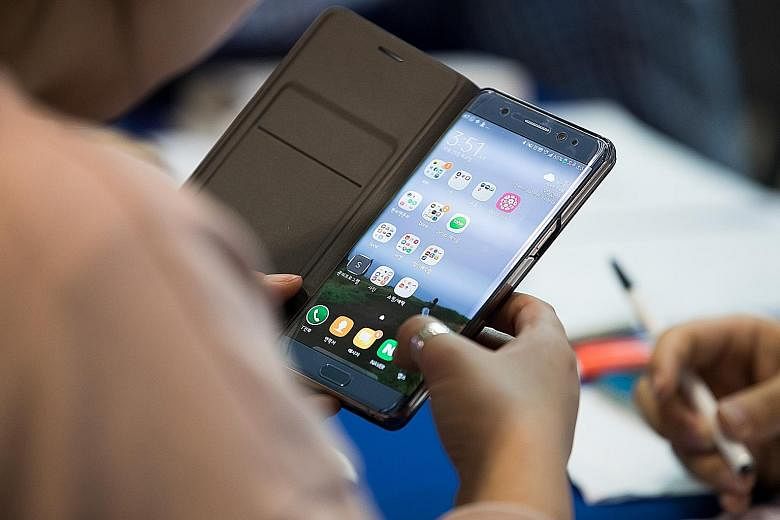SEOUL • Samsung Electronics yesterday said it plans to invest at least 21.4 trillion won (S$25.8 billion) in South Korea as it seeks to extend its lead in memory chips and next-generation displays for smartphones.
The world's biggest memory chip maker by revenue said the spending includes 14.4 trillion won by 2021 on its new Nand flash memory chip factory in Pyeongtaek. It will invest 6 trillion won in a new semiconductor production line in Hwaseong, but did not elaborate on the timing or product.
The firm will also add a production line to its Nand plant in Xi'an, China, in response to booming demand for long-term data storage chips. It has not set an investment amount or time frame.
Samsung and other memory makers are widely expected to post record profits this year as a persistent shortage and demand for more capability in smartphones and servers lift prices. Analysts said the shortage is more acute for Nand chips, due to increasing adoption of high-end storage products.
Some analysts said Samsung's production technologies are at least a year ahead of rivals such as Toshiba and SK Hynix. Samsung routinely invests over US$10 billion (S$13.8 billion) in semiconductors annually, helping build its lead.
Samsung, Toshiba and SK Hynix have committed tens of billions of dollars to boost Nand output in recent years, yet analysts and industry sources said shortages are likely to persist at least through this year, as new facilities will not make meaningful supply contributions until next year.
-
US$10b
-
What Samsung routinely exceeds in investments in semiconductors annually, helping build its lead.
Some analysts said the additional capacity could cause slight oversupply early next year, but price crashes are unlikely as smartphone makers opt for greater internal storage. Demand for high-end server storage for cloud computing and virtual reality applications will also continue to grow.
"I believe Nand market conditions will continue to favour suppliers until 2020," said HMC Investment analyst Greg Roh. Any oversupply issues will be temporary and limited to seasonally weaker periods, he said.
Samsung said its South Korea investment could create up to 440,000 jobs through 2021. The firm accounted for 40.4 per cent of global memory chip revenue in January-March, data from researcher TrendForce showed.
REUTERS

